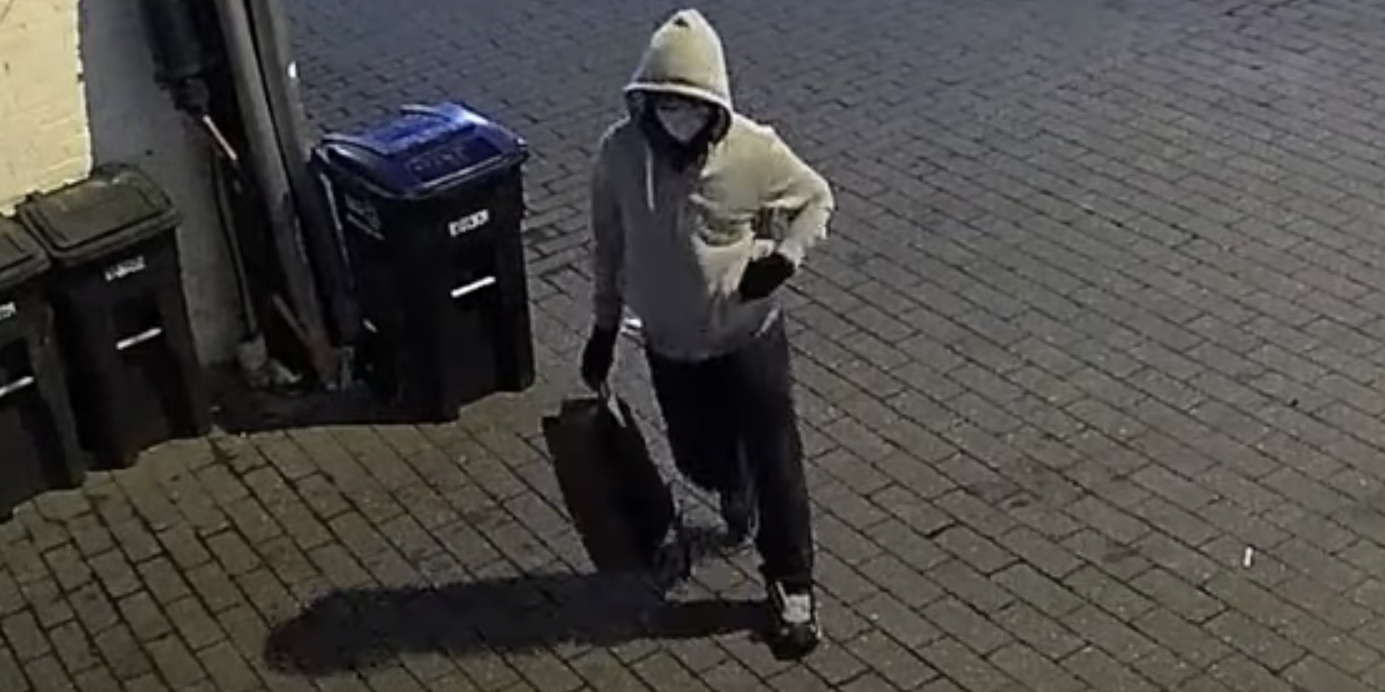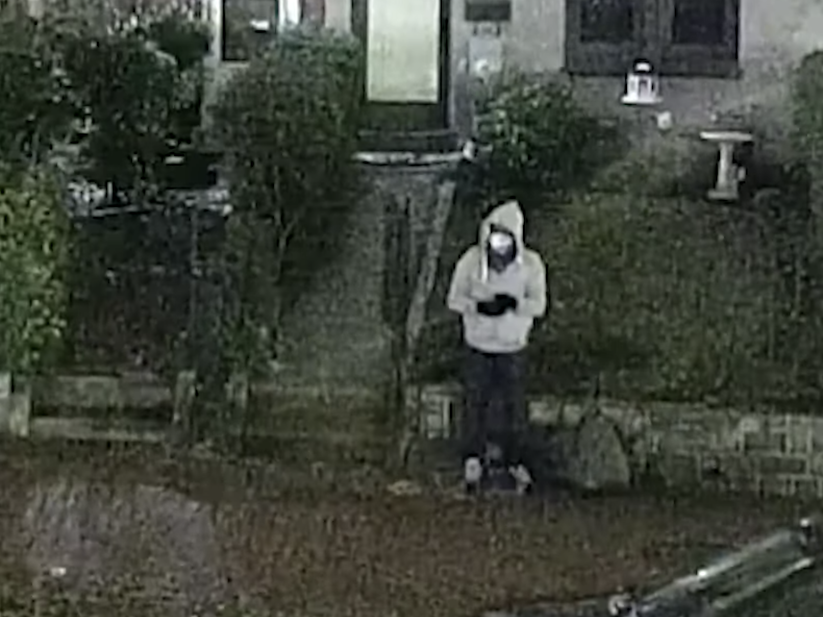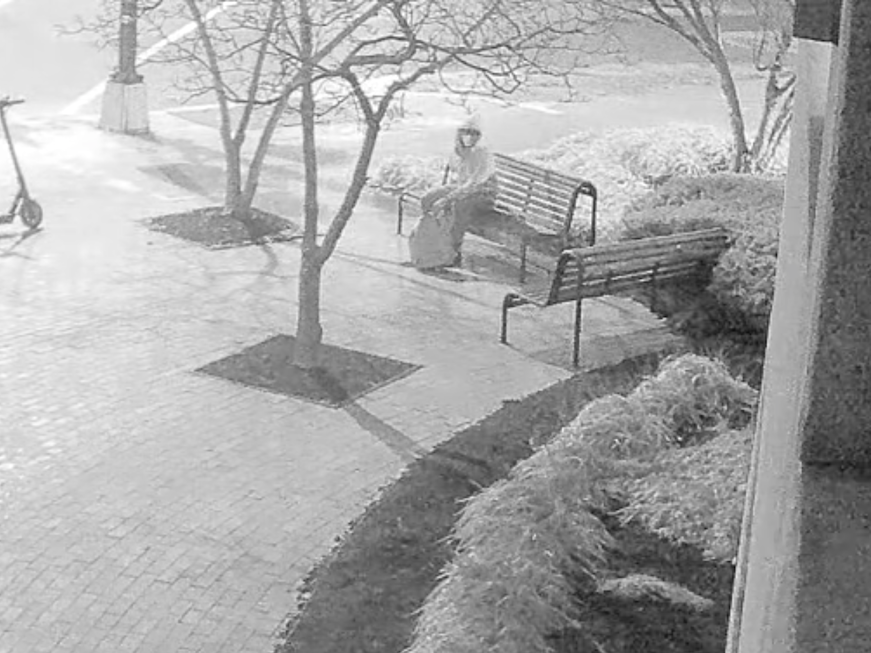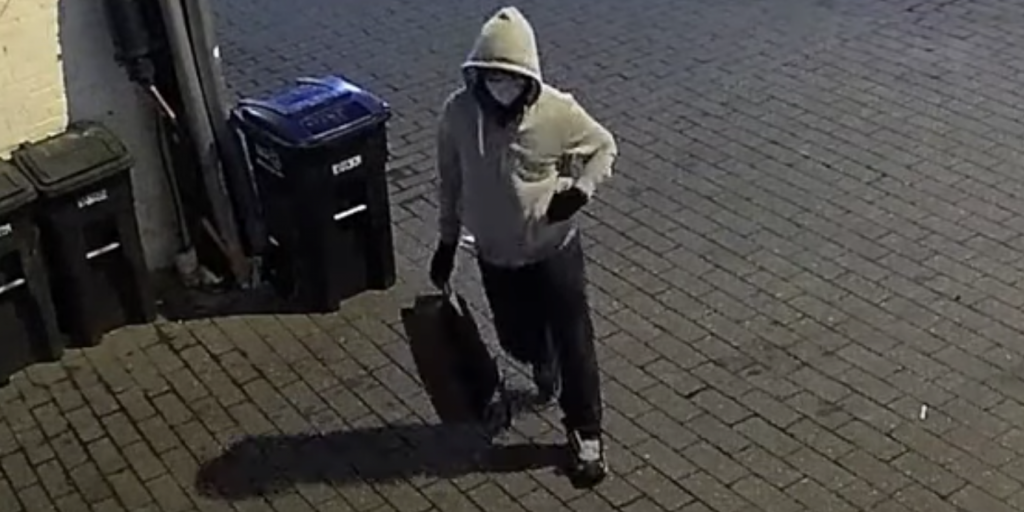
YouTube/FBI
- During the Capitol riot, bombs were found outside DNC and RNC headquarters in Washington, DC.
- Feds have identified more than 600 accused insurrectionists, but not the bomb suspect.
- A former FBI agent, a terrorism expert, and online sleuths told Insider why they think the bomber's identity remains a mystery.
In more than ten months since a mob of Trump supporters stormed the US Capitol to try and stop Congress from validating Joe Biden's 2020 presidential election win, the FBI has arrested more than 600 suspected insurrectionists.
But the person responsible for placing two pipe bombs outside of the Democratic and Republican party headquarters the night before the riot still hasn't been identified.
Federal agents and amateur sleuths poured through CCTV footage and social media posts to track down accused rioters, filling charging documents with a wealth of surveillance footage stills and details from tipsters.
The FBI has released scant details on the bomb suspect in that same timeframe.
We know what they were wearing, the path they took to drop off the bombs, and that they may have been from out of town. That's it. We don't even know definitively whether this person was male or female.
How has this one suspect remained so elusive? Insider spoke with a former FBI agent, a terrorism expert, and amateur sleuths about why the bomb suspect hasn't been caught - and whether the feds will ever find them.
The FBI didn't respond to Insider's request for comment on this story.
Here's what we know about the suspect
It was at the beginning of the insurrection that pipe bombs were first discovered outside the DNC and RNC headquarters on January 6.
The bombs never went off. But the threat took much-needed officers away from the main action.
Steven Sund, who was chief of the US Capitol Police at the time of the riot, theorized that the bombs were planted as a distraction.
"I think that's all part of the concerted and coordinated efforts that led to the violent attack," Sund told NPR days after the riot. "Those were diversionary tactics to pull resources away from the Hill in advance of that attack. I honestly believe that."
The FBI was able to quickly obtain surveillance footage of a single person placing the bombs, which helped paint an initial picture of the suspect.
The suspect wore a face mask, glasses, gloves, and a grey hooded sweatshirt when placing the bombs between 7:30 and 8:30 p.m. the night before the riot. They also wore a distinctive pair of sneakers: black and light grey Nike Air Max Speed Turf shoes with a yellow logo.

FBI
Since the riot, the FBI has released two additional press releases, calling on the public for help identifying this suspect and releasing new video footage. They haven't offered much new information, other than the fact that investigators believe the suspect wasn't from the area.
The experts and sleuths who spoke to Insider believe they can deduce a few other details about the person who planted the pope bombs, including that the suspect is male.
An amateur sleuth, who asked to be identified only by the name Katze, told Insider that he figured out the general shoe size of the suspect by working with a journalist who measured the size of stones that the suspect was seen walking on.
The suspect has an exceptionally large shoe size, even for a man, Katze said. While he couldn't get through to someone at Nike to confirm the man's shoe size, he spoke to some Nike counterfeiters who helped him estimate that the shoes were a men's size 16.5 or 17.

Nike via FBI
The suspect's choice to wear branded shoes also suggests a lack of sophistication, because a smart bomber would want to dress as anonymously as possible, former FBI agent Erroll Southers told Insider.
"You want to be the gray person," Southers said. "You want to be that person that walks through the crowd and when people ask about him or her, they say, 'I didn't even notice them.'"
Mary, a member of the same sleuth group as Katze, Capitol Terrorists Exposers, said that she believes the suspect isn't Black after watching surveillance footage in which he appears to wave at a passing police vehicle. Mary, who is Black, said she doesn't know of any Black person who would wave at a police officer.
The bomber also likely acted alone, which would make him harder to find, according to criminologist Brian Levin, who has a specialty in terrorism. He bases this on the fact that the bomber placed pipe bombs - which are fairly easy to produce - and hasn't been caught.
But bombers are tougher to catch because of the detached nature of the crime, Levin said.
"There's a whole time aspect to bombing that I don't think people really appreciate," he said. "Other crimes you kinda gotta be there most of the time."
Bombers have "the real benefit of lying in wait, operating in the dark at night," he added.
How the FBI identifies bombers
Southers said that investigators will be analyzing the pipe bombs to figure out where the individual parts and ingredients came from.
The route a suspect takes to and from dropping off a device is also important. Southers said investigators stitch together CCTV footage to track a suspect's movement, and the longer they're able to follow that person through security or closed circuit footage, the more opportunities there are to reveal their identity.
If the suspect takes public transportation, there may be cameras on buses and trains that get a shot of that person's face. If the suspect takes a car, investigators can get the license plate number.
The FBI appears to have pieced together the Capitol riot bomber's steps already. In their most recent update on the case to the public, on September 9, they released a video charting the suspect's route through DC.
The coronavirus outbreak may prove a significant barrier to identifying the suspect, Southers said, since the suspect was wearing a face mask.
Internet sleuth Mary told Insider that at this point enough images of the suspect have been released for someone to recognize him.
"I think I would be pretty able to recognize that person, if I knew them," Mary said.
What motivates bombers, and why they're so hard to catch
There are three major motivations for bombers, according to Levin: ideological, psychological, and personal benefit or revenge.
While the bombs were placed on the eve of the Capitol riot, the information the FBI released so far doesn't rule out the latter two motivations.
Since the bomber doesn't appear to have acted again, Levin said they could have been motivated to participate in the January 6 Trump events specifically, and not have plans to become a serial bomber.
There's also the question of why the FBI hasn't shared many new leads with the public. It could suggest that investigators identified a suspect and are surveying them, according to Southers.
"If no news is good news, and they have an idea of who this person is now, we'll sit on him and decide if he is part of a larger network," Southers said. "Who is he coordinating with physically or virtually? Is this a group effort? If we have a name or ID, has he done other things? Now we start to put that big venn diagram on the board that you see on TV to find out what are the connections."

FBI
The lack of new information could also indicate the bureau simply doesn't have any leads. Levin said the FBI's renewed call for tips last month indicates to him that the bureau may be at a "bottleneck."
It's not unusual for investigators to hit a wall in the hunt for a bomber. Levin used the example of Ted Kaczynski, dubbed the Unabomber, who was eventually captured after a 17-year manhunt.
"Sometimes you get to a point where the investigation slows down a bit like a traffic jam," Levin said. "I'm not saying it's a dead end but you try and look at the other pieces or get some more pieces."
Mary said the scope of the Capitol riot investigation is so vast that she understands why the suspect hasn't been caught. While she's helped dox accused insurrectionists, she's left the bomb suspect to the feds, who she believes are "better-equipped" to solve this mystery.
There's even been some head-butting in the sleuth community between those who think looking into the bomber is worth the time and those that don't, Mary added.
When asked if Americans should be worried that the suspect hasn't been caught, Levin said the country may have bigger issues - such as a startling rise in hate crime.
"This is just a manifestation of something we're seeing all the time now," Levin said. "So yeah he's a threat, but I'm as concerned about someone doing a similar type of thing against a COVID testing facility or at a school board meeting or at the state capital somewhere."
Levin said he believes the FBI will eventually crack the case because they have the necessary time and resources.
"Time is the biggest investigator ally that you will ever find," Levin said.
Southers agreed: "One thing the FBI taught me is it's just a matter of patience … We may not catch you today or tomorrow, but we'll be around the corner next year and you'll still be guilty and you'll still be the suspect."
Dit artikel is oorspronkelijk verschenen op z24.nl
